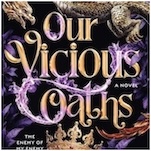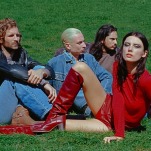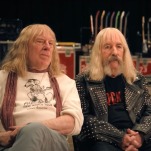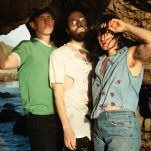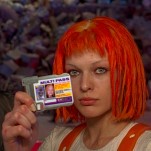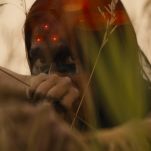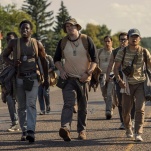The Legacy of Ornette Coleman
Photo by Matias Nieto/GettyOn May 22, 1959, just one month after Miles Davis had recorded his modal masterpiece (the best-selling jazz record of all time) and two weeks after Charles Mingus had recorded his landmark Mingus Ah Um, Ornette Coleman went into the studio with his white Grafton plastic saxophone and a like-minded crew of bassist Charlie Haden, trumpeter Don Cherry and drummer Billy Higgins to record his prophetically-titled The Shape of Jazz to Come. Unlike his 1958 Contemporary Records debut, Something Else!!!!—essentially a progressive post-bop session with piano and a direct link to bebop alto sax master Charlie Parker—The Shape of Jazz to Come stakes out wholly new territory on gems like “Focus on Sanity,” “Peace,” “Congeniality” and especially on his mournful, timeless classic “Lonely Woman,” which Lou Reed once called “the greatest melody anywhere.”
With that liberating, watershed album and his two subsequent releases in 1960—Change of the Century and This Is Our Music—the iconoclastic player-composer-theorist would usher in a new movement in jazz that broke free from the rigid confines of bebop while emphasizing highly expressive, soaring melodies. The movement would coalesce with Coleman’s provocative 1961 release, Free Jazz: A Collective Improvisation.
If he had ceased recording at that moment in history, the visionary composer and unothodox improviser would have secured a place for himself in the pantheon of jazz. But he continued on a restlessly creative path, courting new muses and concocting new modes of expression over the course of six decades, right up until his passing on June 11 at age 85.
Coleman’s influence on generations of musicians cannot be overestimated. His harmolodic theory, whereby harmony, movement of sound and melody all share the same value, had a profound affect on downtown renegade composers like John Zorn, Bobby Previte and John Lurie of the Lounge Lizards along with alto saxophonist-composers Henry Threadgill and Arthur Blythe, bassist-producer Bill Laswell and his band Material as well as M-Base founders and fellow alto saxophonists Greg Osby and Steve Coleman, guitarists James “Blood” Ulmer, Bern Nix, Kenny Wessel and Pat Metheny, bassists Jamaaladeen Tacuma, Al MacDowell, Melvin Gibbs and Chris Walker, drummers Ronald Shannon Jackson, Calvin Weston and his own son, Denardo Coleman, who made his recording debut at the age of 10 on 1966’s The Empty Foxhole.
A recipient of a 1984 NEA Jazz Masters fellowship, a 1994 MacArthur Fellowship (the so-called Genius Grant) and a Pulitzer Prize in Music in 2007 as well as a Grammy Lifetime Achievement Award that same year, Coleman was a soft-spoken, beloved figure whose commitment to uncompromising expression never wavered over his long and illustrious career. In a gala 84th birthday celebration held last summer at Brooklyn’s Prospect Park Bandshell, organized by Ornette’s son, drummer Denardo Coleman, a wide variety of artists came to pay tribute to their hero, including Flea of the Red Hot Chili Peppers, Patti Smith, Bill Laswell, John Zorn and Laurie Anderson, guitarists Nels Cline and Thurston Moore, tap dancer extraordinaire Savion Glover and a phalanx of saxophonists including Joe Lovano, David Murray, Branford Marsalis and Ravi Coltrane. While appearing somewhat frail, the jazz icon performed while seated on a chair on stage, and he delivered these poignant words to the audience in what was one of his final public performances: “It’s so beautiful to see so many beautiful people who know what life is, who know how to get together and help each other. It’s good to be alive while we’re alive. The only thing we have to do is to be alive. So do what you want to do so that we can all have something to enjoy.”
Born in Fort Worth, Texas on March 9, 1930, Coleman started out on tenor sax and began playing in R&B and bebop bands before switching to alto, which became his main instrument after relocating to Los Angeles in 1954. While his iconoclastic approach to his instrument was off-putting to many musicians at the time, Coleman found an inner circle of kindred spirits in pianist Paul Bley, trumpeter Don Cherry, bassist Charlie Haden and drummers Ed Blackwell and Billy Higgins, with whom he began forging a new collective improv vernacular in their early experiments at the Hillcrest Club.
-

-

-

-

-

-

-

-

-

-

-

-

-

-

-

-

-

-

-

-

-

-

-

-

-

-

-

-

-

-

-

-

-

-

-

-

-

-

-

-





















